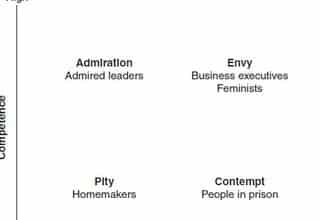We recently lost one of the greatest minds of our time, Stephen Hawking. A physicist, cosmologist, astronomer, and mathematician, Hawking’s studies on black holes and relativity revolutionized the way we see and study the universe. This alone makes him a leader in his field, but let’s discuss how he became a leader to the rest of us.
Admittedly, I am not well-versed in physics (I’m sorry if this disappoints you and I understand if you’d prefer to read leadership articles from a more physics-minded author). What I do understand about physics, however, is entirely the result of Hawking’s internationally bestselling book, A Brief History of Time. I’ve read it a few times and feel a bit smarter each time. As a result, I find this book to be the perfect leadership takeaway for all of us.
In A Brief History of Time, Hawking took an incredibly intricate, dense theory and simplified it to a point where us non-scientists could comprehend and discuss the Big Bang in technical terms. This effort to reduce complexity should be the priority of every leader.
Excess complexity inhibits success. The Global Simplicity Index found that within 200 of the largest companies, 10% of annual profits were being wasted through excess complexity. It demotivates employees, distracts from the work that needs to get done, and burdens teams with multiple tools. Complexity is why we struggle to connect strategy to business results. Its why executing large-scale programs are so rarely successful. And it is why change management initiatives feel so painful.
The pursuit of simple cannot be treated like your typical initiative—it involves a cultural transformation. To enact this scale of change, every leader within the organization must embrace simplification and promote it to their teams. One company that has successfully owned the practice of simplicity is Apple.
In his book Insanely Simple: The Obsession That Drives Apple’s Success, Ken Segall discussed the ways Steve Jobs made simplification a cultural beacon. Jobs measured every project or prototype against his verbal simplicity stick. Everyone at Apple understood that to avoid getting swatted with Job’s stick, there was an expectation that every idea be thoroughly tested for uncomplicatedness. While the electronics behind the screen remain complex, the vision, priorities, and steps to complete a task are as easily applied as the devices Apple develops.
Want to encourage a ‘simple’ culture? Try to avoid the following management behaviors that create complexity:
Over-engineering: Making something more complex than necessary
Replicating: Reworking an existing product or service with unnecessary local variations
Reinventing: Creating new ways of doing something without first determining whether a new way is needed
Fiddling: Making changes that reflect your personal preference based solely upon vanity or boredom
Clarity: Concentrating on the process rather than the actual cause of the problem
Lack of focus: Centering on the insignificant distractions; failing to prioritize the opportunities that create real value
Purposelessness: Failing to set a vision and expectations from the onset
Constructing without deconstructing: Adding to a process without also considering whether a piece needs to be removed
Pragmatism: Not recognizing when being ‘mostly good’ is good enough versus when perfection is essential
Decisiveness: Unwilling to move forward without 100% consensus
Stephen Hawking once said, “However difficult life may seem, there is always something you can do and succeed at.” As a leader, that ‘something’ can be your ability to make the unattainable attainable. You can be the conduit who transforms complex ideas into consumable, bite-sized pieces. As the resident problem shrinker, you can break down an issue so as to create a clear path to solve it. When this happens, imagine how much more your team will accomplish. It’s almost too simple.








